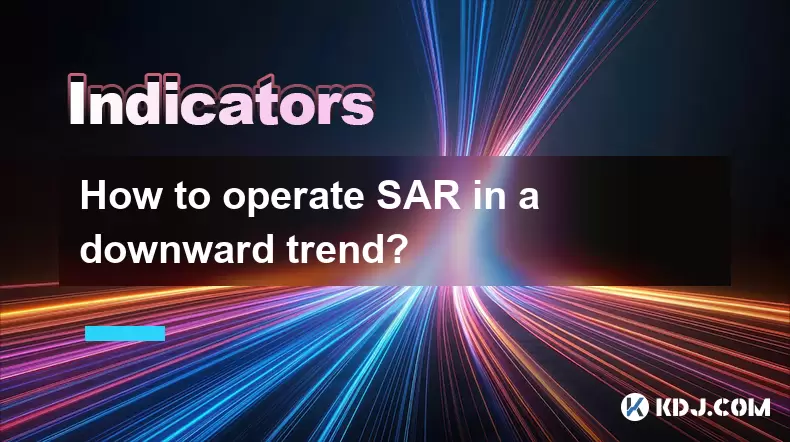-
 Bitcoin
Bitcoin $117800
-3.15% -
 Ethereum
Ethereum $4539
-3.66% -
 XRP
XRP $3.072
-6.08% -
 Tether USDt
Tether USDt $1.000
0.02% -
 BNB
BNB $834.3
-1.03% -
 Solana
Solana $193.1
-2.71% -
 USDC
USDC $0.9997
-0.01% -
 TRON
TRON $0.3583
-0.87% -
 Dogecoin
Dogecoin $0.2233
-8.06% -
 Cardano
Cardano $0.9033
3.60% -
 Chainlink
Chainlink $22.34
-5.78% -
 Hyperliquid
Hyperliquid $44.87
-4.90% -
 Stellar
Stellar $0.4226
-6.29% -
 Sui
Sui $3.765
-5.57% -
 Bitcoin Cash
Bitcoin Cash $588.5
-3.94% -
 Ethena USDe
Ethena USDe $1.001
0.00% -
 Hedera
Hedera $0.2489
-5.54% -
 Avalanche
Avalanche $23.69
-5.77% -
 Litecoin
Litecoin $120.8
-6.90% -
 Toncoin
Toncoin $3.398
-2.63% -
 UNUS SED LEO
UNUS SED LEO $9.276
0.31% -
 Shiba Inu
Shiba Inu $0.00001285
-7.22% -
 Uniswap
Uniswap $10.92
-9.38% -
 Polkadot
Polkadot $3.991
-5.68% -
 OKB
OKB $94.79
-8.25% -
 Dai
Dai $0.9998
0.01% -
 Bitget Token
Bitget Token $4.553
-4.67% -
 Cronos
Cronos $0.1514
-8.71% -
 Ethena
Ethena $0.7243
-7.57% -
 Aave
Aave $310.5
-5.14%
How to operate SAR in a downward trend?
In a downward trend, SAR points above the price act as dynamic resistance, helping traders identify entry and exit points for short positions to capitalize on bearish momentum.
May 22, 2025 at 12:35 pm

Understanding SAR in a Downward Trend
SAR, or Stop and Reverse, is a popular technical indicator used by traders to determine potential reversals in the price of an asset. In a downward trend, the SAR can help traders identify key points for entering or exiting trades. When the market is experiencing a bearish trend, the SAR points appear above the price, acting as a dynamic resistance level. Traders use these points to make informed decisions about when to sell or short an asset, aiming to capitalize on the continuing downward movement.
Setting Up SAR for a Downward Trend
To effectively use SAR in a downward trend, traders need to set up the indicator correctly on their trading platform. Here's how to do it:
- Open your trading platform and navigate to the chart of the cryptocurrency you are interested in.
- Select the SAR indicator from the list of available technical indicators.
- Adjust the settings if necessary. The default settings for SAR are usually adequate, but some traders might prefer to tweak the acceleration factor and maximum value to better suit their trading strategy.
- Apply the SAR indicator to the chart. You will see the SAR points plotted on the chart, and in a downward trend, these points will be positioned above the price.
Identifying Entry and Exit Points with SAR
In a downward trend, the SAR indicator helps traders identify optimal entry and exit points for short positions. Here's how to use SAR for this purpose:
- Entry Point: When the price of the cryptocurrency breaks below the SAR point, it signals a potential entry point for a short position. This indicates that the bearish trend is likely to continue, and traders can enter a short trade to profit from the downward movement.
- Exit Point: As the price continues to drop, the SAR points will follow the price downwards. When the price starts to approach the next SAR point from below, it may be time to consider exiting the trade to lock in profits. If the price crosses above the SAR point, it could signal a potential reversal, and traders should exit their short position to avoid losses.
Managing Risk with SAR in a Downward Trend
Risk management is crucial when trading in a downward trend using SAR. Here are some strategies to manage risk effectively:
- Set Stop-Loss Orders: Place a stop-loss order just above the SAR point to limit potential losses if the price unexpectedly reverses. This helps protect your capital and ensures you exit the trade before significant losses occur.
- Use Trailing Stops: As the price continues to decline, adjust your stop-loss order to follow the SAR points. This allows you to lock in profits as the trade moves in your favor while still providing protection against sudden reversals.
- Monitor Market Conditions: Keep an eye on other technical indicators and market news that could affect the downward trend. If there are signs of a potential reversal, be prepared to exit your trade earlier than planned.
Combining SAR with Other Indicators
While SAR can be a powerful tool on its own, combining it with other technical indicators can enhance its effectiveness in a downward trend. Here are some indicators that work well with SAR:
- Moving Averages: Use a moving average to confirm the downward trend. If the price is below a long-term moving average, it strengthens the bearish signal provided by SAR.
- Relative Strength Index (RSI): The RSI can help identify overbought and oversold conditions. In a downward trend, look for the RSI to remain below 50 to confirm the bearish momentum.
- MACD (Moving Average Convergence Divergence): The MACD can provide additional confirmation of the downward trend. A bearish crossover of the MACD line below the signal line can reinforce the sell signals generated by SAR.
Practical Example of Using SAR in a Downward Trend
Let's walk through a practical example of how to use SAR in a downward trend with Bitcoin (BTC). Suppose you are monitoring the daily chart of BTC/USD and notice a clear downward trend.
- Initial Setup: You apply the SAR indicator to the chart and observe that the SAR points are above the current price of Bitcoin, confirming the bearish trend.
- Entry Point: The price breaks below the current SAR point at $40,000. You decide to enter a short position, anticipating further downward movement.
- Monitoring the Trade: As the price continues to drop, the SAR points move lower. You adjust your stop-loss order to follow the SAR points, locking in profits as the trade progresses.
- Exit Point: The price approaches the next SAR point at $38,000. You consider exiting the trade to secure your profits. If the price were to cross above the SAR point, you would exit immediately to avoid potential losses.
Frequently Asked Questions
Q1: Can SAR be used effectively in all market conditions?
While SAR is particularly useful in trending markets, its effectiveness can vary in ranging or choppy markets. In such conditions, SAR may generate false signals, leading to potential losses. It's important to combine SAR with other indicators and market analysis to improve its reliability.
Q2: How often should I adjust the SAR settings?
The default settings for SAR are generally suitable for most traders. However, if you find that the indicator is generating too many false signals or missing important trends, you might need to adjust the acceleration factor and maximum value. It's advisable to test different settings on historical data before applying them to live trades.
Q3: Is SAR suitable for all timeframes?
SAR can be used on various timeframes, from short-term intraday charts to longer-term weekly or monthly charts. However, its effectiveness may vary depending on the timeframe. Shorter timeframes might produce more signals but also more false positives, while longer timeframes might offer more reliable signals but fewer trading opportunities.
Q4: How can I combine SAR with fundamental analysis?
While SAR is a technical indicator, you can enhance your trading strategy by incorporating fundamental analysis. For instance, if SAR signals a bearish trend in a cryptocurrency, and you also observe negative news or declining fundamentals for that asset, it can reinforce your decision to enter a short position. Always consider both technical and fundamental factors for a more comprehensive trading approach.
Disclaimer:info@kdj.com
The information provided is not trading advice. kdj.com does not assume any responsibility for any investments made based on the information provided in this article. Cryptocurrencies are highly volatile and it is highly recommended that you invest with caution after thorough research!
If you believe that the content used on this website infringes your copyright, please contact us immediately (info@kdj.com) and we will delete it promptly.
- Kazakhstan's Crypto Leap: Bitcoin ETF and Central Asia's Digital Finance Future
- 2025-08-13 12:45:19
- BlockDAG Presale Blazes Past $371M: Fundraising Frenzy Fuels Crypto Sensation
- 2025-08-13 13:05:21
- Meme Coins: Chasing the 2025 Surge – Which Will Moonshot?
- 2025-08-13 10:25:23
- Bitcoin's Wild Ride: Rally, Pullback, and What's Next
- 2025-08-13 10:25:23
- Bitcoin, Bitmax, and Institutional Demand: A New Era of Crypto Investment
- 2025-08-13 10:45:12
- Solana, ROAM, and Airdrops: What's the Buzz in 2025?
- 2025-08-13 11:35:13
Related knowledge

What does it mean when the +DI and -DI cross frequently in the DMI indicator but the ADX is flattening?
Aug 11,2025 at 03:15am
Understanding the DMI Indicator ComponentsThe Directional Movement Index (DMI) is a technical analysis tool composed of three lines: the +DI (Positive...

What does the sudden appearance of a "dark cloud cover" candlestick pattern during an uptrend indicate?
Aug 13,2025 at 11:35am
Understanding the 'Dark Cloud Cover' Candlestick PatternThe dark cloud cover is a bearish reversal pattern in technical analysis that typically appear...

What does it mean when the moving average, MACD, and RSI all send buy signals simultaneously?
Aug 11,2025 at 01:42pm
Understanding the Convergence of Technical IndicatorsWhen the moving average, MACD, and RSI all generate buy signals at the same time, traders interpr...

What does it mean when both the KDJ indicator and the RSI show overbought signals simultaneously?
Aug 13,2025 at 11:35am
Understanding the KDJ Indicator in Cryptocurrency TradingThe KDJ indicator is a momentum oscillator derived from the Stochastic Oscillator, widely use...

What does it mean when the price is trading above the SAR indicator but the red dots are densely packed?
Aug 09,2025 at 11:49pm
Understanding the SAR Indicator and Its Visual SignalsThe SAR (Parabolic Stop and Reverse) indicator is a technical analysis tool used primarily to de...

What does it mean when the candlestick chart forms a "Morning Star" but trading volume is sluggish?
Aug 12,2025 at 06:28pm
Understanding the Morning Star Candlestick PatternThe Morning Star is a three-candle bullish reversal pattern commonly observed in cryptocurrency pric...

What does it mean when the +DI and -DI cross frequently in the DMI indicator but the ADX is flattening?
Aug 11,2025 at 03:15am
Understanding the DMI Indicator ComponentsThe Directional Movement Index (DMI) is a technical analysis tool composed of three lines: the +DI (Positive...

What does the sudden appearance of a "dark cloud cover" candlestick pattern during an uptrend indicate?
Aug 13,2025 at 11:35am
Understanding the 'Dark Cloud Cover' Candlestick PatternThe dark cloud cover is a bearish reversal pattern in technical analysis that typically appear...

What does it mean when the moving average, MACD, and RSI all send buy signals simultaneously?
Aug 11,2025 at 01:42pm
Understanding the Convergence of Technical IndicatorsWhen the moving average, MACD, and RSI all generate buy signals at the same time, traders interpr...

What does it mean when both the KDJ indicator and the RSI show overbought signals simultaneously?
Aug 13,2025 at 11:35am
Understanding the KDJ Indicator in Cryptocurrency TradingThe KDJ indicator is a momentum oscillator derived from the Stochastic Oscillator, widely use...

What does it mean when the price is trading above the SAR indicator but the red dots are densely packed?
Aug 09,2025 at 11:49pm
Understanding the SAR Indicator and Its Visual SignalsThe SAR (Parabolic Stop and Reverse) indicator is a technical analysis tool used primarily to de...

What does it mean when the candlestick chart forms a "Morning Star" but trading volume is sluggish?
Aug 12,2025 at 06:28pm
Understanding the Morning Star Candlestick PatternThe Morning Star is a three-candle bullish reversal pattern commonly observed in cryptocurrency pric...
See all articles

























































































